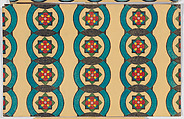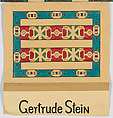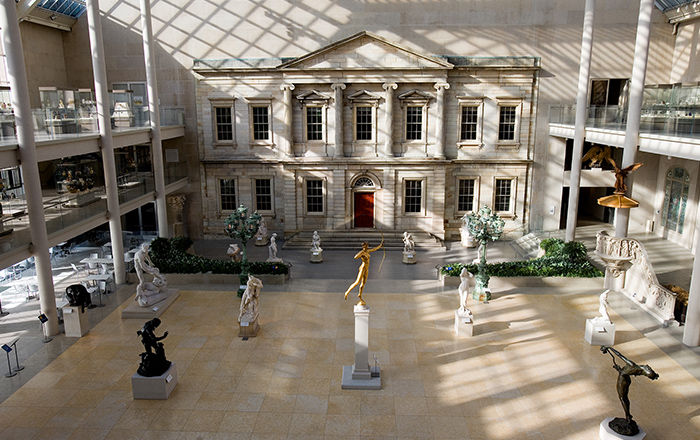Gertrude Stein (1874–1946)
Mary Sully Native American
Mary Sully, born Susan Deloria on the Standing Rock Reservation in South Dakota, was a little-known, reclusive Yankton Dakota artist who, between the 1920s and the 1940s, created groundbreaking works informed by her Native American and settler ancestry. Working without patronage, in near obscurity, and largely self-taught, Sully produced some two hundred intricately designed and vividly colored drawings that complicate traditional notions of Native American and modern art. They mix meaningful aspects of her Dakota heritage with visual elements observed from other Native nations and the aesthetics of urban life. Euro-American celebrities from popular culture, politics, and religion inspired some of her most striking works, which she called “personality prints”—abstract portraits arranged as vertical triptychs. Together, Sully’s works offer a fresh, complex lens through which to consider American art and life in the early twentieth century.
One of Sully’s characteristic vertical triptychs, this work features a repeating rose motif that references a line of poetry by the avant-garde writer Gertrude Stein: “Rose is a rose is a rose is a rose.” As in Stein’s verse, Sully’s flower is both literal and symbolic. The compositional dialogue between positive and negative space in all three panels echoes aspects of Dakota women’s arts. Stein’s cultural profile heightened in 1934 during her thirty-seven-city lecture tour of the United States—marketed as the expatriate’s homecoming—to promote her memoir, The Autobiography of Alice B. Toklas (1933), which became her most commercially and critically successful book.
This image cannot be enlarged, viewed at full screen, or downloaded.
This artwork is meant to be viewed from right to left. Scroll left to view more.






